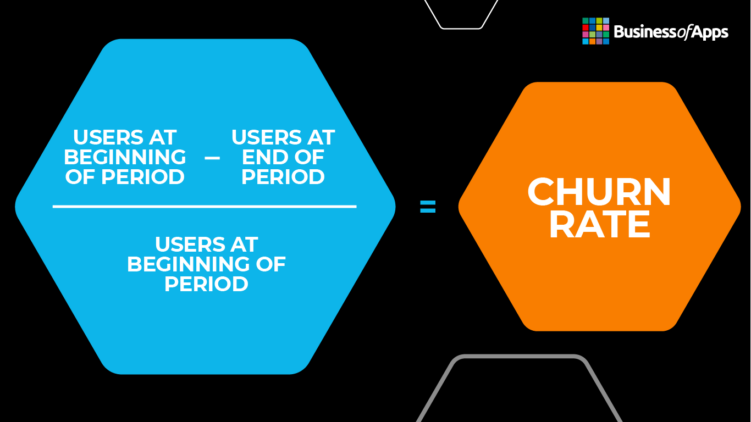
An app’s success hinges on how good it is at engaging and retaining users. With more than 2.24 million apps available on the Apple App Store and 2.63 million on the Google Play Store, the competition is HUGE. It’s no longer enough to just acquire a user, you have to keep them engaged to ensure they stay hooked into your app and regularly come back for more. So, to help you with that, let’s talk app engagement today and cover all the key app engagement strategies you need to be aware of to guarantee your app’s success. But first things first, let’s define mobile app engagement before we go any further.
Featured App Engagement Platforms
What is mobile app engagement?
App engagement measures the interaction between a user and a mobile app as a whole or certain features of an app. Put simply, app engagement is a measure of what makes an app successful. Engaged users spend more, give you more data you can leverage, and provide you with more touchpoints to capitalize on. User engagement varies from completing an app’s onboarding to making a purchase or simply swiping through an app.
Common engagement metrics include time spent in-app, DAU/MAU ratio, session length, actions taken, and daily uninstalls (aka churn rate). Understanding these key metrics will help you craft successful app engagement strategies that turn one-time users into loyal ones.
Download our App Engagement Buyer’s Guide, covering all the trends, strategies, and metrics you need to know to ace app engagement in 2025.App Engagement Buyer's Guide
Essential mobile app engagement metrics
Active users and DAU/MAU ratio
The term active users refers to the number of unique users who engage with an app during a predetermined time period. It is a critical metric that allows marketers to measure growth and churn.
Measuring your active users is most often done on either a daily or a monthly basis, whence we get the two holy grails of app engagement: DAU and MAU. DAU (daily active users) measures the number of unique users in a 24-hour period, while MAU (monthly active users) refers to the number of unique users in a 30-day window.
App stickiness
Now that you have your DAU and your MAU, it’s time to put them to work. By dividing your app’s MAU by its DAU, you can calculate your DAU/MAU ratio or how “sticky” your app is, aka how often your users return. Comparing this metric over time will help you see how effective your engagement campaigns are.
App stickiness formula
Churn rate
Churn rate is used to identify how many of your users are lost in a predefined time period. It generally includes both people who have uninstalled the app and those who haven’t opened it in months, even if they still have it on their mobile phones.
To calculate your churn rate, take the number of users lost during a given time period and divide that by the number of users that you started with at the beginning of that same period. The resulting percentage is your churn rate.
Churn rate formula
Tracking your churn rate on a regular basis is important. Knowing how many users uninstall your app can help you understand where you’re going wrong in the user journey, gaining valuable data that can help you get more users over time.
Session length and time spent in-app
Knowing how long the average user spends on your app can help you determine how successful it is. Session length refers to the amount of time users spend in an app each time they open it. This definition could be a bit misleading, however, as there are many different apps. Some apps (such as streaming audio apps) may also include time spent streaming in the background, while always-on apps (such as kiosks) generally have built-in timeouts in their session models.
On the other hand, time spent in-app is the overall time spent by a user in the app.
There are a couple of useful metrics to keep in mind when discussing session length and time spent in-app.
- Time per session
- Time spent per session over time
- Average number of sessions per user in a predetermined time period
- Time spent per N number of sessions
- Session interval
Key mobile app engagement strategies
Now that we have a good understanding of what app engagement is and know how to track the key app engagement metrics, let’s discuss the most common app engagement strategies to help you ace your next engagement campaign.
Onboarding
With so many apps out there, a smooth onboarding journey can make or break your app. After all, first impressions are everything and if users find your app too confusing or don’t get the value promised from the get-go, they will simply churn and download one of the many alternatives to your app. In other words, a smooth onboarding journey is crucial for success and sustainable growth.
Make sure to eliminate any obstacles users commonly face, simplify the interface, give users the option to personalize, and make sure to show your app’s value immediately. These are some of the things you can do to make the onboarding as smooth as possible and incentivize conversions.
By showing your users why your app is the best and allowing them to change their experience to fit their needs, you can quickly charm them and turn them into loyal users.
Finally, never sleep on performance data. Remember to constantly monitor key performance metrics and ensure you are constantly iterating to guarantee your users the best experience possible.
Segmentation
We often hear mobile marketers talk about user base, but the truth is every app has many user bases, so don’t make the mistake of assuming all your users are the same.
By segmenting your audience, you can create personalized campaigns that will lead to more opens, interactions, purchases, and time spent in-app.
You can segment your audience by location, purchase habits, time spent in-app, or even how long they’ve had your app on their phone. Once you have that data, you can target your different user bases to get the results you want.
Push notifications, SMS, email campaigns, in-app messaging
Communicating with your users is key, and we’ve already seen how important it is to communicate your app’s value from the moment a new user opens it.
Personalized and intriguing in- and out-of-app communication can be a great conversion tool for you to add to your marketing tool belt. From push notifications, SMS, and email to in-app messages, the sky is the limit when it comes to getting users to engage with your app. For example, you can remind users of actions they’ve forgotten to complete, promote a sale, or simply give them a gentle nudge to engage with your app again after a period of inactivity. Just remember to keep things short and sweet as too much messaging could quickly become annoying and is, in fact, one of the top reasons why people uninstall apps.
Personalization
We all know how important it is to collect and analyze performance data. Well, if you’ve done your homework, it’s time to put that data to work. Determine what your different user groups like and personalize your campaigns to help them convert.
Individualizing each campaign to different audiences is a surefire way to boost your users’ loyalty and conversion rates in one fell swoop.
Retargeting
Let’s face it, you will lose users, there’s no way around it. You can’t please everyone after all and not all your marketing campaigns will be as successful as you might have initially thought. When this happens, you should consider retargeting as a great way to help you win back some of your lost users. From personalized ads, targeted email campaigns, or perhaps a good old SMS to giving incentives/gifts to inactive users, there are plenty of channels you can use to help you win back some of your churned users.
Loyalty programs
With so much effort being put into acquiring new users and bringing back those you’ve lost, long-term users can sometimes get lost in the mix. But loyal users often spend more than their newer counterparts, so keeping them happy is crucial.
Membership programs, reward systems, and value-driven clubs are all great loyalty programs that you might want to consider to keep your long-term user base happy and engaged.
Conclusion
App engagement is crucial to your app’s success and sustainable growth. By implementing some or, preferably, all of the above strategies, you can create a loyal audience for your app that keeps coming back for more.




